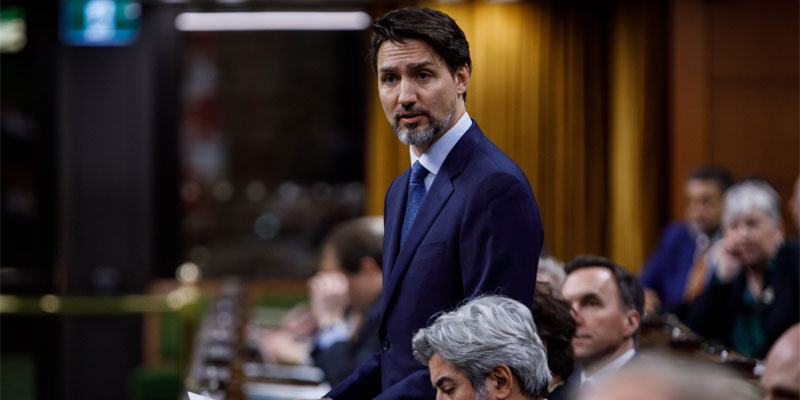Canada moving quickly towards U.S.-style ‘spend now, pay later’ government

Pulitzer Prize-winning author George Will has repeatedly argued that contrary to conventional wisdom, there is enormous consensus in Washington, D.C.—borrow today to finance spending and tax cuts but leave the costs (i.e. taxes) to the next generation. There are increasing signs that Canadians are gravitating to this D.C. consensus, which resulted in the U.S. national debt (held by the public) increasing from $3.4 trillion in 2000 to $16.8 trillion in 2019, pre-recession.
Up to 2015 and extending back to at least the mid-1990s, Canadians had a very different consensus—balanced budgets and paying down debt, prioritizing government spending to live within our means, and competitive taxes. Such consensus led not only to strong government balance sheets but also a comparatively robust economy.
A shift occurred in the 2015 election when the Trudeau Liberals were elected on a promise to run deficits for three years to finance increased spending.
Of course, that’s not where we’ve ended up. Between 2016-17 and 2019-20 (pre-recession), the Liberal government increased spending (excluding debt interest costs) by $118.0 billion compared to the baseline 2015 budget of their predecessors, well in excess of Liberal election promises.
And even though the Liberals benefitted from $26.1 billion in cumulatively lower debt interest costs, the much higher levels of spending necessitated an additional $86.4 billion in borrowing, with no end in sight to deficits. Simply put, the governing Liberals spent a lot more than planned—and all of it was financed by borrowing.
The results from a recent Angus Reid Institute poll on pharmacare underscore this new preference for receiving benefits today but imposing the costs on the next generation. The poll showed 88 per cent support for a national pharmacare program covering all Canadians.
Critically, though, the expansive poll only included one question that attached any sense of “cost” to the new program. The poll asked for support if different taxes were increased to pay for the new program. Support for national pharmacare remained strong when the “cost” was attached to a new wealth tax on those earning more than $250,000 or a higher corporate income. For both of these taxes, average Canadians reasonably see someone else paying for the cost of this new program rather than themselves.
However, when asked whether they supported national pharmacare if it meant a one percentage point increase in the middle-income tax rate (even though this would be insufficient to pay for such a program), support for national pharmacare plummets to 47 per cent. Our expectation is that support would be even lower if a question linked the real cost of national pharmacare to an increase in the GST. Canadians overwhelmingly support pharmacare, so long as they don’t have to pay for it today.
And it’s not just opinion polls. The expansion of the Canada Child Benefit (CCB) in 2016, one of the signature reforms of the Trudeau government, embodies this preference for receiving benefits today and paying for them tomorrow. The CCB provides tax-free payments to roughly 90 per cent of Canadian families with children under 18. In 2019-20, the expanded CCB represented a 30 per cent increase over costs of previous child benefit programs introduced by the Harper government. Critically, though, the entirety of the increase in the CCB was financed by borrowing. In other words, the increased benefits received by parents today will be paid for by their children in the future.
There are serious risks to government finances, both today and in the long-run, if Canadians indeed drift further towards a U.S.-style approach to public finances, where existing programs are expanded and new ones introduced while the costs are pushed into the future for the next generation to worry about. Like in the United States, this approach in Canada will mean more government debt passed on to the next generation with very little to show for it.


